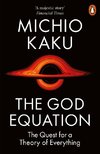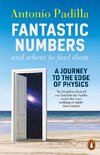
-
 Anglický jazyk
Anglický jazyk
Everything Is Matter Moving Through Space
Autor: Joseph Palazzo
Chapter 1 on the notion of time reveals to what point we have misused that concept. The time taken to mull over this notion was well spent as a breakthrough occurred when I realized what should be the answer to the question, How do we measure motion? Surprisingly,... Viac o knihe
Na objednávku, dodanie 2-4 týždne
14.22 €
bežná cena: 15.80 €
O knihe
Chapter 1 on the notion of time reveals to what point we have misused that concept. The time taken to mull over this notion was well spent as a breakthrough occurred when I realized what should be the answer to the question, How do we measure motion? Surprisingly, the answer is, with motion. The trick was to reverse conventional thinking, which has always been that motion is measured in terms of the ratio distance over time, and therefore, time had to be considered as a fundamental concept, and motion as a derived concept. Why is a reversal of the conventional thinking necessary? Because motion is that which is observed, while time is a mental construct. Because in a universe with no motion, time is a useless concept. A clock is a simple device with internal moving parts that conveniently facilitates the measuring of motion. You need motion to measure motion-this was the major breakthrough. Unquestionably then, time is one of the greatest inventions the human mind has ever produced. Even though a new thinking about time won't necessarily change any of the fundamental equations of physics already established, it brings a new perspective and is an invitation to revise our old notion of time, particularly in regard to the question, Is time real, or is it an illusion? As Einstein once put it, "The separation between past, present, and future is only an illusion, although a convincing one."
Chapter 2 is about the real nature of a Minkowski diagram. With this new concept of time, a Minkowski diagram, which has been taken so far as a coordinate system, is reduced to the status of a graph. The consequence is that we do not live in a 4-D world, but simply in a 3-D world with time acting as a parameter. The four-vector formalism is a convenient way to deal on a mathematical basis, especially in regard to Lorentz invariance.
Chapter 3 outlines three laws of kinematic, emphasizing the third law as the underpinning of the second law of thermodynamics, namely entropy. It challenges our notion of the vacuum energy, and it puts into question the reality of Hawking radiation. Its impact on thermodynamics gives rise to the question, Why is energy quantized?
Chapter 4 revisits the old debate between Einstein and Bohr on the meaning of quantum mechanics, giving new clarity into the postulates of quantum mechanics.
The primary focus of chapter 5 is on the claim that general relativity is not a theory of gravity, even though gravity plays in it a pivotal role. Gravity is then seen as a fictitious force such that in a strong gravitational field, its effects are seen in the bending of light and the anomaly of objects in a strong gravitational field such as the orbit of Mercury.
Chapter 6 is an examination into the fundamental reason why gauge theory in GR is different from in QFT and why that matters in the nearly impossible task of quantizing GR.
Chapter 7 offers a simple explanation of the cosmic microwave background, regardless of any cosmological model, and reexamines the questionable assumptions of the big bang theory.
Last but not the least, chapter 8 is a revision on why string theory fails to be what everyone anticipated to be the theory of everything.
The title is the unifying theme for all these disparate subjects.
- Vydavateľstvo: AuthorHouse
- Rok vydania: 2018
- Formát: Paperback
- Rozmer: 229 x 152 mm
- Jazyk: Anglický jazyk
- ISBN: 9781546256199











 Nemecký jazyk
Nemecký jazyk 
